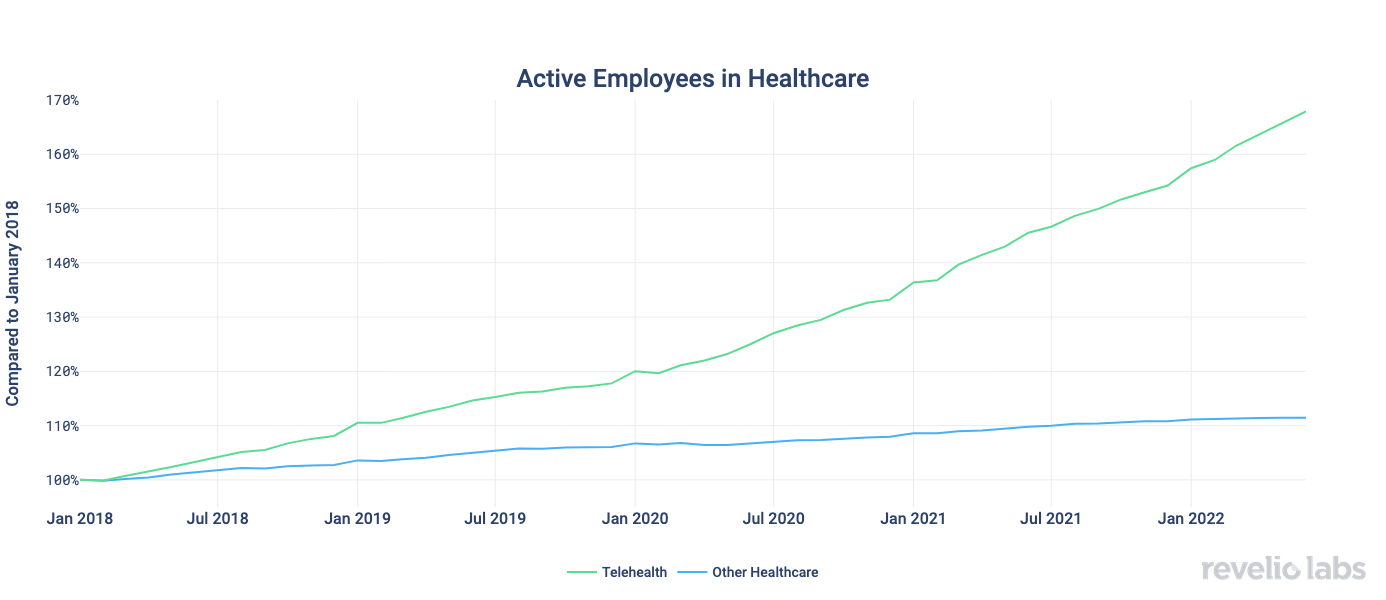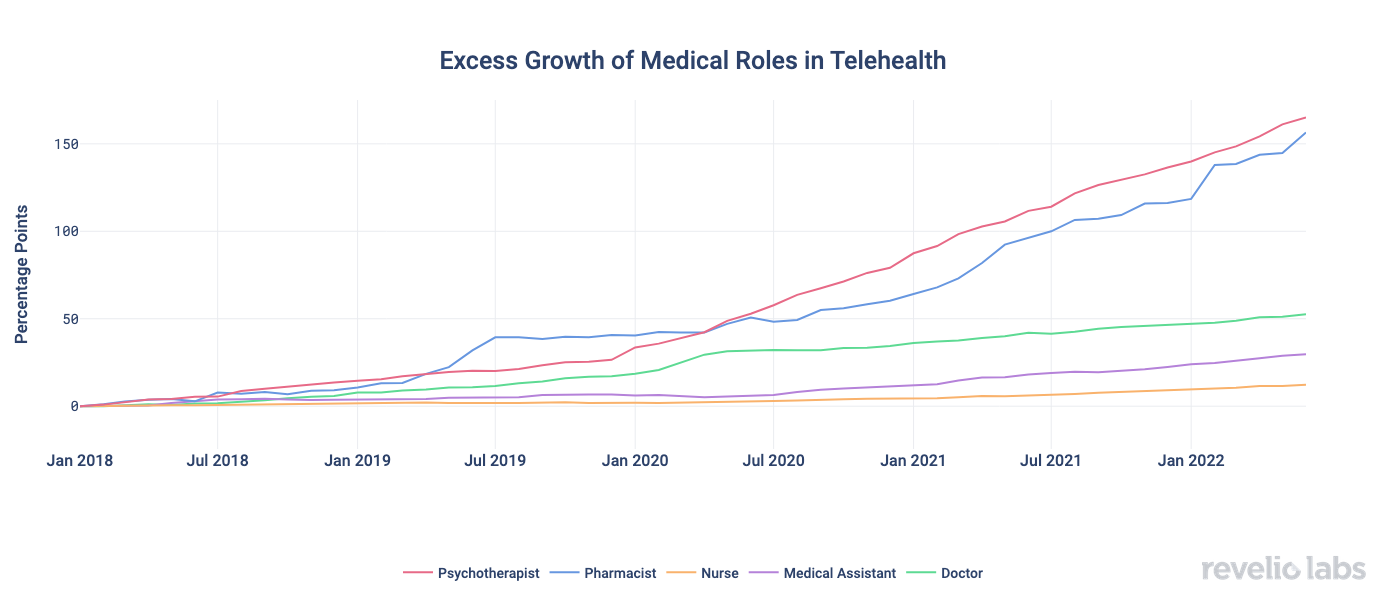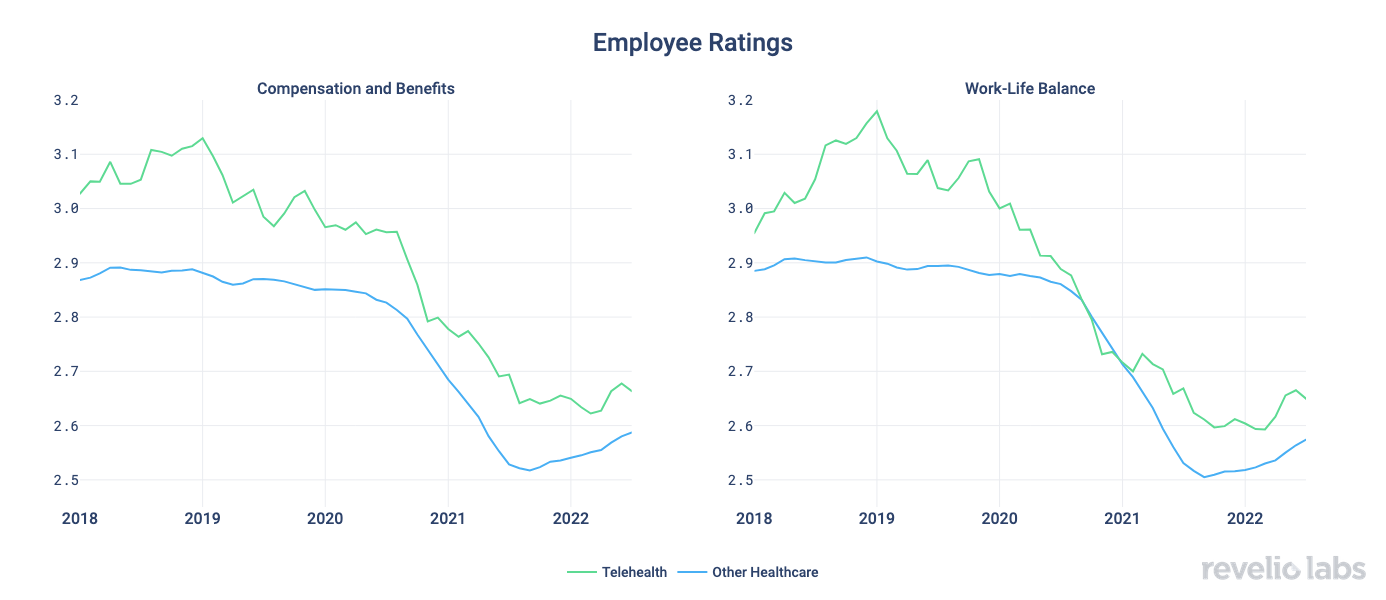Your Therapist is not Going Back to the Office
The telehealth industry began to thrive during the pandemic and continues to deliver convenient care to patients.

The telehealth industry began to thrive during the pandemic and continues to deliver convenient care to patients. This boosted growth may persist—McKinsey estimates that up to $250 billion of current US healthcare could be done virtually. This week, Revelio Labs uses its workforce intelligence software to look at the post-pandemic telehealth boom and see why telehealth positions are becoming more attractive.
Telehealth companies have grown significantly faster in size than their traditional peers in recent years.


Telehealth’s headcount growth has been particularly strong among psychotherapists. With its simple talk-and-listen practice, remote mental health services have rapidly expanded over the past years. At the same time, telepharmacy is also gaining momentum as services including patient counseling, drug therapy monitoring, and prescription refill can be done easily through virtual care.


Sign up for our newsletter
Our weekly data driven newsletter provides in-depth analysis of workforce trends and news, delivered straight to your inbox!
In 2021, CB Insights estimated that funding to the telehealth sector reached a record $57 billion. As investment continues to pour into the telehealth industry, it is not surprising to see that salaries are generally higher at telehealth companies. Notably, telehealth nurses have enjoyed the highest salary premium among medical roles. Burnout and stressful work environments, especially during the pandemic, have exacerbated a nationwide shortage of nurses in the US. In order to attract more nurses, telehealth companies must offer a competitive salary premium.


Higher salary premia are also reflected in telehealth employees’ ratings of compensation and benefits. In addition, the growth of telehealth companies can also be explained by higher employee satisfaction with work-life balance. Virtual care not only provides convenience to patients but also enables healthcare professionals to work more efficiently and flexibly.


Key Takeaways:
- Telehealth companies have grown significantly faster in size compared to traditional healthcare companies in recent years, Revelio Labs workforce intelligence software shows.
- Among all the medical roles, telehealth psychotherapists and pharmacists have grown the fastest.
- Overall, employees in telehealth companies earn more and display higher satisfaction related to compensation and benefits, and work-life balance.

